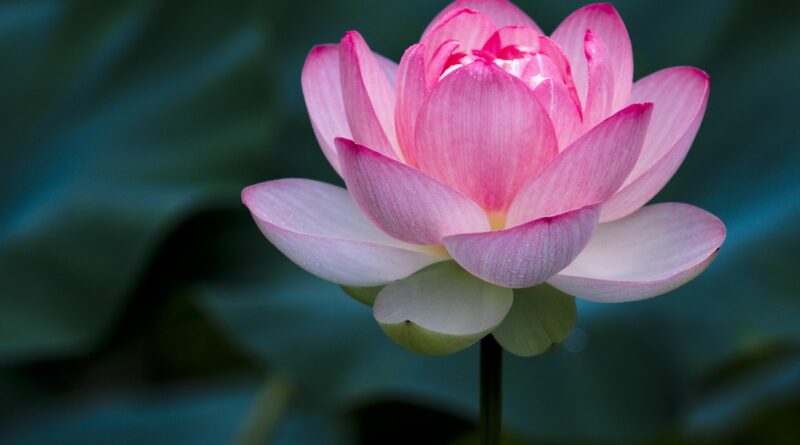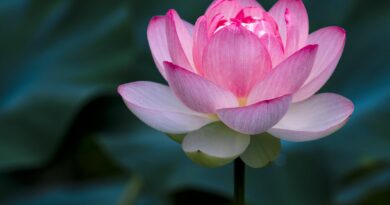Chapter 4 After The Enlightenment
MAIN CONTENT
CHAPTER 4
AFTER THE ENLIGHTENMENT
“Happy in this world is non-attachment”.
— UDĀNA
In the memorable forenoon, immediately preceding the morn of His Enlightenment, as the Bodhisatta was seated under the Ajapāla banyan tree in close proximity to the Bodhi tree,[1] a generous lady, named Sujātā, unexpectedly offered Him some rich milkrice, specially prepared by her with great care.
This substantial meal He ate, and after His Enlightenment the Buddha fasted for seven weeks, and spent a quiet time, in deep contemplation, under the Bodhi tree and in its neighbourhood.
The Seven Weeks
First Week
Throughout the first week the Buddha sat under the Bodhi tree in one posture, experiencing the Bliss of Emancipation (Vimutti Sukha, i.e The Fruit of Arahantship).
After those seven days had elapsed, the Buddha emerged from the state of concentration, and in the first watch of the night, thoroughly reflected on “The Dependent Arising” (Paticca Samuppāda) in direct order thus: “When this (cause) exists, this (effect) is; with the arising of this (cause), this effect arises.[2]“
Dependent on Ignorance (avijjā) arise moral and immoral Conditioning Activities (samkhārā).
Dependent on Conditioning Activities arises (Relinking) Consciousness (vi��āna).
Dependent on (Relinking) Consciousness arise Mind and Matter (nāma-rūpa).
Dependent on Mind and Matter arise the Six Spheres of Sense (salāyatana).
Dependent on the Six Spheres of Sense arises Contact (phassa).
Dependent on Contact arises Feeling (vedanā).
Dependent on Feeling arises Craving (tanhā)
Dependent on Craving arises Grasping (upādāna).
Dependent on Grasping arises Becoming (bhava)
Dependent on Becoming arises Birth (jāti)
Dependent on Birth arise Decay (jarā), Death (marana), Sorrow (soka), Lamentation (parideva), Pain (dukkha), Grief (domanassa), and Despair (upāyāsa).
Thus does this whole mass of suffering originate.
Thereupon the Exalted One, knowing the meaning of this, uttered, at that time, this paean of joy:
“When, indeed, the Truths become manifest unto the strenuous, meditative Brahmana[3], then do all his doubts vanish away, since he knows the truth together with its cause.”
In the middle watch of the night the Exalted One thoroughly reflected on “The Dependent Arising” in reverse order thus: “When this cause does not exist, this effect is not; with the cessation of this cause, this effect ceases.
With the cessation of Ignorance, Conditioning Activities cease.
With the cessation of Conditioning Activities (Relinking) Consciousness ceases.
With the cessation of (Relinking) Consciousness, Mind and Matter cease.
With the cessation of Mind and Matter, the six Spheres of Sense cease.
With the cessation of the Six Spheres of Sense, Contact ceases.
With the cessation of Contact, Feeling ceases.
With the cessation of Feeling, Craving ceases.
With the cessation of Craving, Grasping ceases.
With the cessation of Grasping, Becoming ceases.
With the cessation of Becoming, Birth ceases.
With the cessation of Birth, Decay, Death, Sorrow, Lamentation, Pain, Grief, and Despair cease.
Thus does this whole mass of suffering cease.
Thereupon the Exalted One, knowing the meaning of this, uttered, at that time, this paean of joy:
“When, indeed, the Truths become manifest unto the strenuous and meditative Brahmana, then all his doubts vanish away since he has understood the destruction of the causes.”
In the third watch of the night, the Exalted One reflected on “The Dependent Arising” in direct and reverse order thus. “When this cause exists, this effect is; with the arising of this cause, this effect arises. When this cause does not exist, this effect is not; with the cessation of this cause, this effect ceases.”
Dependent on Ignorance arise Conditioning Activities …. and so forth.
Thus does this whole mass of suffering arises.
With the cessation of Ignorance, Conditioning Activities cease …. and so forth.
Thus does this whole mass of suffering ceases.
Thereupon the Blessed One, knowing the meaning of this, uttered, at that time, this paean of joy:
“When indeed the Truths become manifest unto the strenuous and meditative Brahmana, then he stands routing the hosts of the Evil One even as the sun illumines the sky.”
Second Week
The second week was uneventful, but He silently taught a great moral lesson to the world. As a mark of profound gratitude to the inanimate Bodhi tree that sheltered him during His struggle for Enlightenment, He stood at a certain distance gazing at the tree with motionless eyes for one whole week.[4]
Following His noble example, His followers, in memory of His Enlightenment, still venerate not only the original Bodbi tree but also its descendants.[5]
Third week
As the Buddha had not given up His temporary residence at the Bodhi tree the Devas doubted His attainment to Buddhahood. The Buddha read their thoughts, and in order to clear their doubts He created by His psychic powers a jewelled ambulatory (ratana camkamana) and paced up and down for another week.
Fourth Week
The fourth week He spent in a jewelled chamber (ratanaghara)[6] contemplating the intricacies of the Abhidhamma (Higher Teaching). Books state that His mind and body were so purified when He pondered on the Book of Relations (Patthāna), the seventh treatise of the Abhidbamma, that six coloured rays emitted from His body.[7]
Fifth week
During the fifth week too the Buddha enjoyed the Bliss of Emancipation (Vimuttisukha), seated in one posture ‘under the famous Ajapāla banyan tree in the vicinity of the Bodhi tree. When He arose from that transcendental state a conceited (huhunkajātika) brahmin approached Him and after the customary salutations and friendly greetings, questioned Him thus: “In what respect, 0 Venerable Gotama, does one become a Brahmana and what are the conditions that make a Brahmana?”
The Buddha uttered this paean of joy in reply:
“That brahmin who has discarded evil, without conceit (huhumka), free from Defilements, self-controlled, versed in knowledge and who has led the Holy Life rightly, would call himself a Brahmana. For him there is no elation anywhere in this world.[8]“
According to the Jātaka commentary it was during this week that the daughters of Māra — Tanhā, Arati and Ragā[9]— made a vain attempt to tempt the Buddha by their charms.
Sixth week
From the Ajapāla banyan tree the Buddha proceeded to the Mucalinda tree, where he spent the sixth week, again enjoying the Bliss of Emancipation. At that time there arose an unexpected great shower. Rain clouds and gloomy weather with cold winds prevailed for several days.
Thereupon Mucalinda, the serpent-king,[10] came out of his abode, and coiling round the body of the Buddha seven times, remained keeping his large hood over the head of the Buddha so that He may not be affected by the elements.
At the close of seven days Mucalinda, seeing the clear, cloudless sky, uncoiled himself from around the body of the Buddha, and, leaving his own form, took the guise of a young man, and stood in front of the Exalted One with clasped hands.
Thereupon the Buddha uttered this paean of joy:
“Happy is seclusion to him who is contented, to him who has heard the truth, and to him who sees. Happy is goodwill in this world, and so is restraint towards all beings. Happy in this world is non-attachment, the passing beyond of sense desires. The suppression of the ‘I am’ conceit is indeed the highest happiness.[11]
Seventh week
The seventh week the Buddha peacefully passed at the Rājāyatana tree, experiencing the Bliss of Emancipation.
One of the First Utterances of the Buddha
Thro’ many a birth in existence wandered I,
Seeking, but not finding, the builder of this house.
Sorrowful is repeated birth.
O housebuilder,[12] thou art seen. Thou shall build no house [13] again.
All thy rafters [14] are broken. Thy ridgepole [15] is shattered.
Mind attains the Unconditioned. [16]
Achieved is the End of Craving.
At dawn on the very day of His Enlightenment the Buddha uttered this paean of joy (Udāna) which vividly describes His transcendental moral victory and His inner spiritual experience.
The Buddha admits His past wanderings in existence which entailed suffering, a fact that evidently proves the belief in rebirth. He was compelled to wander and consequently to suffer, as He could not discover the architect that built this house, the body. In His final birth, while engaged in solitary meditation which He had highly developed in the course of His wanderings, after a relentless search He discovered by His own intuitive wisdom the elusive architect, residing not outside but within the recesses of His own heart. It was craving or attachment, a self-creation, a mental element latent in all. How and when this craving originated is incomprehensible. What is created by oneself can be destroyed by oneself. The discovery of the architect is the eradication of craving by attaining Arhantship, which in these verses is alluded to as “end of craving.”
The rafters of this self-created house are the passions (kilesa) such as attachment (lobha) aversion (dosa), illusion (moha), conceit (māna), false views (ditthi), doubt (vicikicchā), sloth (thīna), restlessness (uddhacca), moral shamelessness (ahirika), moral fearlessness (anottappa). The ridgepole that supports the rafters represents ignorance, the root cause of all passions. The shattering of the ridge-pole of ignorance by wisdom results in the complete demolition of the house. The ridge-pole and rafters are the material with which the architect builds this undesired house. With their destruction the architect is deprived of the material to rebuild the house which is not wanted.
With the demolition of the house the mind, for which there is no place in the analogy, attains the unconditioned state, which is Nibbāna. Whatever that is mundane is left behind, and only the Supramundane State, Nibbāna, remains.
[1] The famous Pipal tree at Buddha Gayā in northern India which sheltered Him during His struggle for Enlightenment.
[2] Sea Chapter 25
[3] Brahmin is a racial term which means “one who studies the Vedas”, generally applied to the priestly caste. Sometimes the Buddha uses this term in the sense of “one who has discarded evil” — a Saint.
In this book “Brahmana” is used to denote a Saint, and “Brahmin”, to denote a member of that particular caste.
[4] On the spot where the Buddha stood, a Cetiya has been erected by King Asoka. This was named Animisalocana Cetiya and is still to be seen.
[5] The right-hand branch of the original Bodhi tree which was brought to Ceylon by Sanghamittā Theri and planted by King Devānampiyatissa at Anuradhapura, the ancient capital of Ceylon, still exists in a flourishing condition, though more than 2200 years old.
[6] So called because the Buddha reflected on the jewels of the Abhidhamma.
[7] Namely, blue (nīla), yellow (pīta), red (lohita), white (odāta), orange (ma�jettha) and a mixture of these five colours (pabhassara).
[8] Uddāna, p. i.
[9] These three cannot be personified passions as the incident took place after the Enlightenment.
[10] This Naga King cannot be a human being. The Vinaya texts also cite an interesting story of a serpent who, assuming the form of a human being, lived for some time as a Bhikkhu in robes.
[11] Sukho viveko tutthassa sutadhammassa passato
Abyāpajjham sukham loke pānabhūtesu samyamo
Sukhā virāgatā loke kāmānam samatikkamo
Asmimānassa yo vinayo etam ve paramam sukham.
Uddāna p. 10.
[12] i.e., Craving (tanhā).
[13] Body.
[14] Passions (kilesa)
[15] Ignorance (avijj ā ).
[16] Nibbāna





